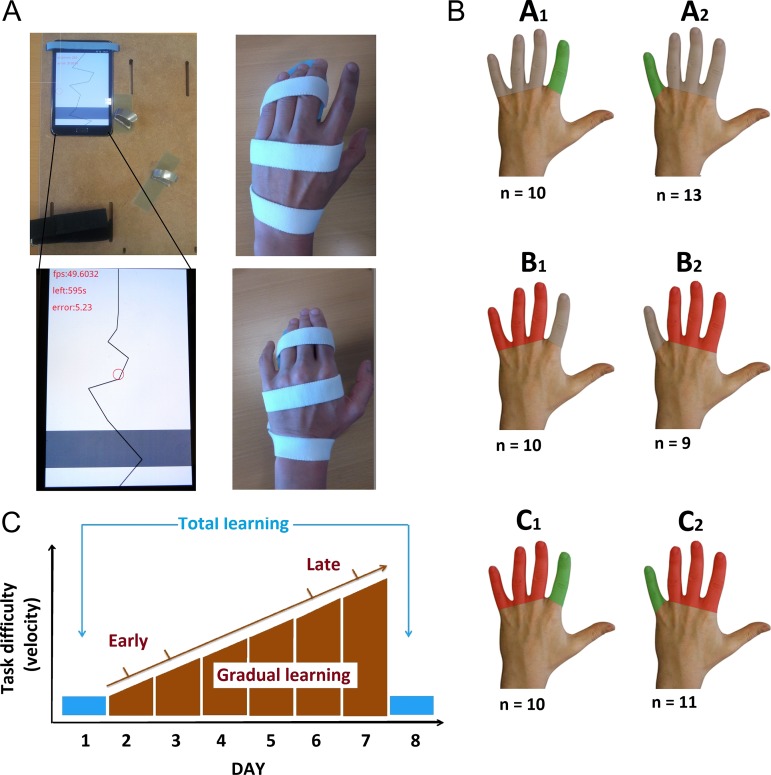Figure 1.
(A) Smartphone-based finger training using a flexible setup adjustable for training either the left index or little finger (left). The wrist and the nontrained fingers were fixed to the platform with Velcro strap to stabilize their position and to prevent cocontraction during tracking. The tracking task consisted in a moving line going from the top of the screen to the bottom. The red circle reflects the actual position of the subject’s training finger. This red circle was controlled by the index or index placed on the gray line. Feedbacks about the remaining time and online performances were provided. The right pictures display the immobilization procedure of three adjacent fingers (fingers III–V or II–IV) with an individually made splint. (B) Types of interventions: Groups A1 and A2. Selective finger training without immobilization of adjacent fingers; groups B1 and B2: Immobilization of three adjacent fingers without training; groups C1 and C2: Selective finger training with simultaneous immobilization of adjacent fingers. Subgoups 1 and 2 differed in terms of the targeted finger. (C) Assessment of visuomotor tracking skill: Finger tracking with the index and little finger was assessed at days 1 and 8 using exactly the same task settings and during each training session at days 2–7 with a gradual increase in difficulty during consecutive sections.

